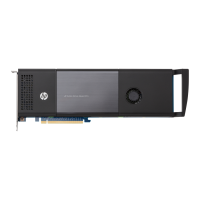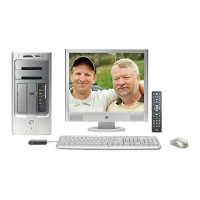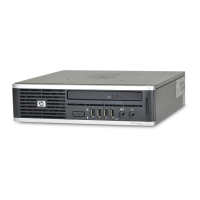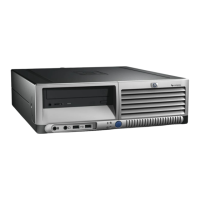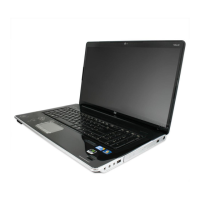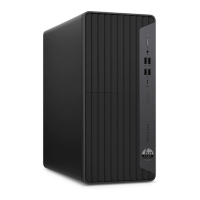When cleaning debris from under the keys, review all rules in General cleaning safety precautions on
page 11 before following these procedures.
CAUTION: Use safety glasses equipped with side shields before attempting to clean debris from
under the keys.
● You can remove visible debris underneath or between the keys by vacuuming or shaking.
● You can use canned, pressurized air to clean debris from under the keys. Use caution because too
much air pressure can dislodge lubricants applied under the wide keys.
● If you remove a key, use a specially designed key puller to prevent damage to the keys. This tool is
available through many electronic supply outlets.
IMPORTANT: Never remove a wide leveled key (like the space bar) from the keyboard. If these
keys are improperly removed or installed, the keyboard might not function properly.
● You can clean under a key with a swab moistened with isopropyl alcohol and squeezed out. Be
careful not to wipe away lubricants necessary for proper key functions. Use tweezers to remove any
fibers or dirt in confined areas. Allow the parts to air dry before reassembly.
Cleaning the monitor
Follow all safety precautions before cleaning dirt and debris from your computer. Use this information to
properly clean the monitor.
● Wipe the monitor screen with a clean cloth moistened with water or with a towelette designed for
cleaning monitors. Do not use sprays or aerosols directly on the screen; the liquid can seep into the
housing and damage a component. Never use solvents or flammable liquids on the monitor.
● To clean the monitor body, follow the procedures in Cleaning the computer case on page 13.
Cleaning the mouse
Follow all safety precautions before cleaning dirt and debris from your computer. Use this information to
properly clean the mouse.
● Clean the mouse ball by first removing the retaining plate and the ball from the housing. Pull out any
debris from the ball socket and wipe the ball with a clean, dry cloth before reassembly.
● To clean the mouse body, follow the procedures in Cleaning the computer case on page 13.
Service considerations
Keep these considerations in mind during the disassembly and assembly of the computer.
Tools and software requirements
Servicing the computer requires these tools.
● Torx T-15 screwdriver
● Flat-bladed screwdriver (can sometimes be used in place of the Torx screwdriver)
● Phillips P1 screwdriver
● Nonconductive, nonmarking pry tool
14
Chapter 3 Routine care, drive guidelines, and disassembly preparation
